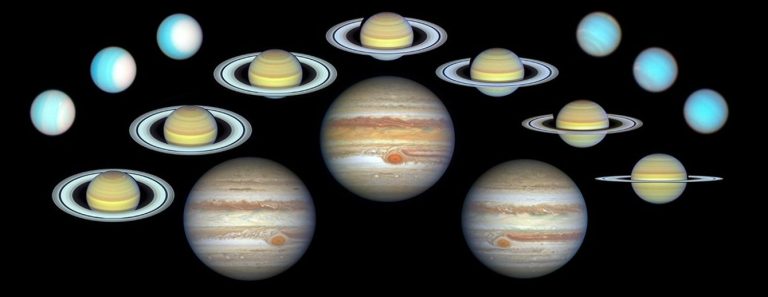Two views of Jupiter showcase the wealth of information provided by the spectral filters of the Hubble Space Telescope’s Wide Field Camera 3 (WFC3) science instrument. On the left, the RGB composite is created using three filters at wavelengths similar to the colors seen by the human eye. On the right, the wavelength limits are expanded beyond the visible range to extend only to the ultraviolet (UV) and infrared regimes. Humans cannot perceive these extended wavelengths, but some animals (such as the mantis shrimp, whose eyes function similarly to some sensors on some NASA missions) are able to detect infrared and ultraviolet light. The result is a vivid disk that shows high UV-absorbing haze in orange (over the poles and in three major storms, including the Great Red Spot), and freshly formed ice in white (compact storm plumes just north of the equator). Astronomers, including the OPAL team, use these filters (and others not shown here) to study differences in cloud thickness, altitude, and chemical composition.
NASA, ESA, Amy Simon (NASA-GSFC), Michael H. Wong (UC Berkeley); Image processing: Joseph DePasquale (STScI)


